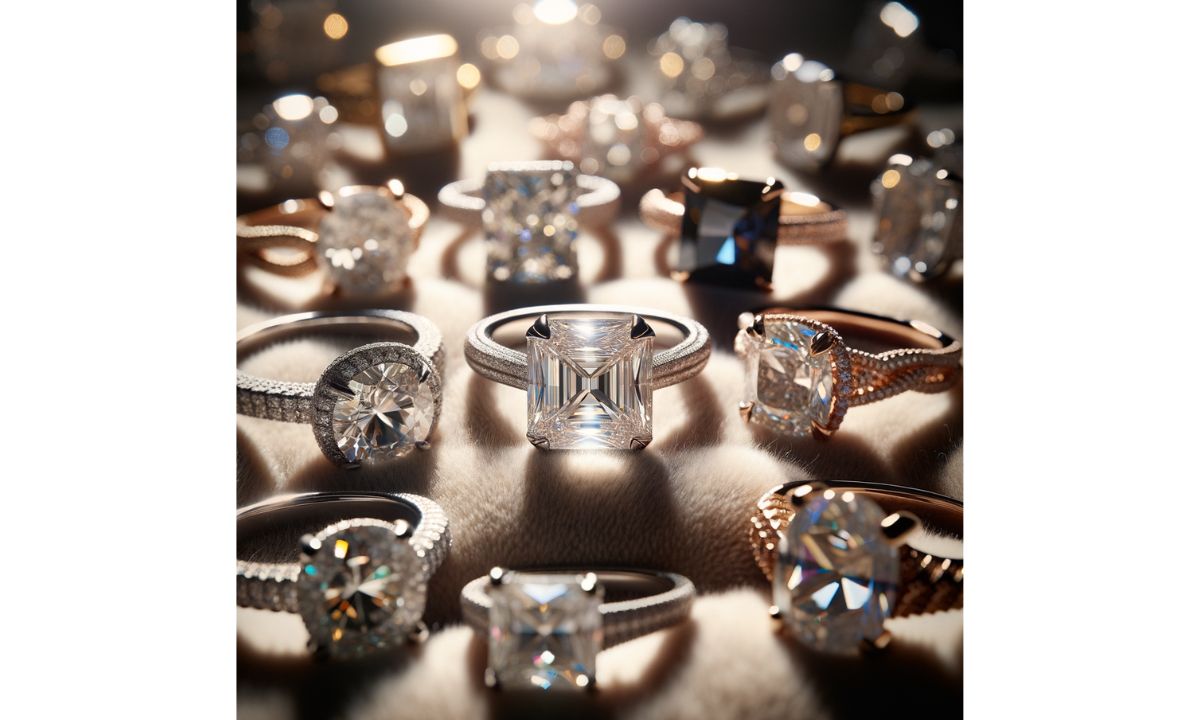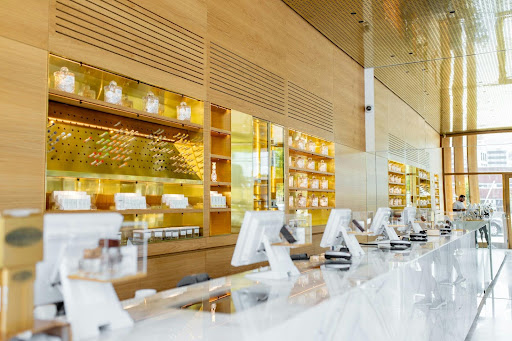Lab grown diamond rings are becoming a popular choice for those looking for an ethical, affordable, and eco-friendly alternative to traditional mined diamonds. These diamonds, also known as man-made diamonds, are created in a laboratory setting using advanced technology that replicates the natural process of diamond formation. They possess the same physical, chemical, and optical properties as natural diamonds, but they come with several distinct advantages. In this guide, we’ll dive into the world of lab-grown diamonds, explore their benefits, and help you decide if they’re the right choice for your next engagement ring or special gift.
Why Choose Lab Grown Diamonds Over Natural Diamonds?
There are several compelling reasons to choose a lab-grown diamond ring over a natural diamond. Let’s break down the main factors that might influence your decision.
Ethical Considerations
One of the most significant reasons people opt for lab-grown diamonds is their ethical appeal. Traditional diamond mining has been associated with exploitative labor practices and environmental degradation. By choosing a lab-grown diamond, you can be confident that your ring has been created without harming the environment or supporting unethical labor practices. This makes them an excellent choice for eco-conscious consumers.
Environmental Impact
The environmental impact of diamond mining is substantial. Mining requires massive amounts of energy, water, and chemicals, and it often leads to significant ecological damage. On the other hand, lab-grown diamonds require far fewer resources to create and leave a much smaller carbon footprint. Choosing lab-grown diamonds is a step towards sustainability and reducing environmental harm.
The Process Behind Lab Grown Diamond Creation
Understanding how lab grown diamond rings are made can help you appreciate the intricate science and technology behind them.
How Lab Grown Diamonds are Made
There are two primary methods for creating lab-grown diamonds: High Pressure High Temperature (HPHT) and Chemical Vapor Deposition (CVD). Both methods replicate the natural conditions in which diamonds form beneath the Earth’s surface.
- HPHT Method: This process involves mimicking the intense pressure and high temperatures found deep within the Earth. A carbon source is placed under extreme conditions, forming a diamond crystal.
- CVD Method: In the CVD process, a carbon-rich gas is heated to high temperatures in a vacuum chamber. The gas breaks down and carbon atoms deposit onto a substrate, gradually forming a diamond.
Both methods produce diamonds that are chemically identical to natural diamonds, making them virtually indistinguishable to the naked eye.
Technology and Methods Used
Advancements in technology have made lab-grown diamonds more affordable, accessible, and high-quality. As technology continues to improve, the precision in creating lab-grown diamonds has reached new heights. The quality control in labs is more rigorous than in natural diamond mining, ensuring that the diamonds produced are flawless or near-flawless.
The Benefits of Choosing Lab Grown Diamonds
Now that we understand how lab-grown diamonds are created, let’s explore the numerous benefits they offer to consumers.
Affordability
Lab-grown diamonds are typically 20-40% less expensive than their natural counterparts, making them a budget-friendly option for those seeking a diamond ring without breaking the bank. This affordability allows you to opt for a larger or more intricate diamond than you might be able to afford with a natural diamond.
Variety and Customization
Lab-grown diamonds offer a wide variety of shapes, sizes, and styles, giving you more freedom to customize your ring. Whether you want a classic round diamond or a unique, custom-cut stone, lab-grown diamonds make it easy to find or design the perfect piece. Many jewelers also offer customization in terms of settings and band designs, making the process personal and tailored to your style.
Lab Grown Diamond Rings: Are They Durable?
A common question when considering lab-grown diamonds is whether they are as durable as natural diamonds. The answer is yes. Lab-grown diamonds are chemically identical to natural diamonds, meaning they share the same hardness and durability.
How Lab Grown Diamonds Compare to Natural Diamonds in Durability
Both natural and lab-grown diamonds score a 10 on the Mohs scale of hardness, the highest rating for any mineral. This makes diamonds incredibly durable and resistant to scratching, ensuring that your ring will last a lifetime with proper care. Whether you’re purchasing an engagement ring or a fine piece of jewelry, lab-grown diamonds offer the same durability and resilience as mined diamonds.
Potential Drawbacks of Lab Grown Diamond Rings
While lab-grown diamonds have many advantages, there are a few potential drawbacks to consider before making a purchase.
Value Perception
One of the most significant concerns with lab-grown diamonds is the perception of their value. Many people still view natural diamonds as more valuable due to their rarity and the centuries-old tradition of diamond mining. Lab-grown diamonds, although identical in appearance and quality, may be viewed as less prestigious by some consumers, especially in the context of luxury gifts.
Resale Value
Another consideration is the resale value of a lab-grown diamond. While they are cheaper upfront, they tend to have a lower resale value than natural diamonds. The market for reselling lab-grown diamonds is still developing, and you may not be able to recoup as much money if you decide to sell your diamond in the future.
How to Choose the Best Lab Grown Diamond Ring for You
Choosing the best lab-grown diamond ring can be a fun and exciting process. Here are some tips to help guide your decision.
What to Look for in a Lab Grown Diamond Ring
When shopping for a lab-grown diamond ring, consider the same factors you would for a natural diamond: cut, clarity, color, and carat weight (the 4 Cs). These characteristics will determine the quality and appearance of the diamond. Pay attention to the certification of the diamond, as reputable labs issue certificates that guarantee the quality of the stone.
Choosing the Right Setting and Style
The setting and style of your ring are just as important as the diamond itself. Consider the metal type (platinum, white gold, yellow gold, etc.), the band design, and whether you want a solitaire or multi-stone setting. Personalizing the setting can elevate the beauty of the diamond and make the ring uniquely yours.
ALSO READ: Enhancing Your Ride: Top Accessories for Mobility Scooters











